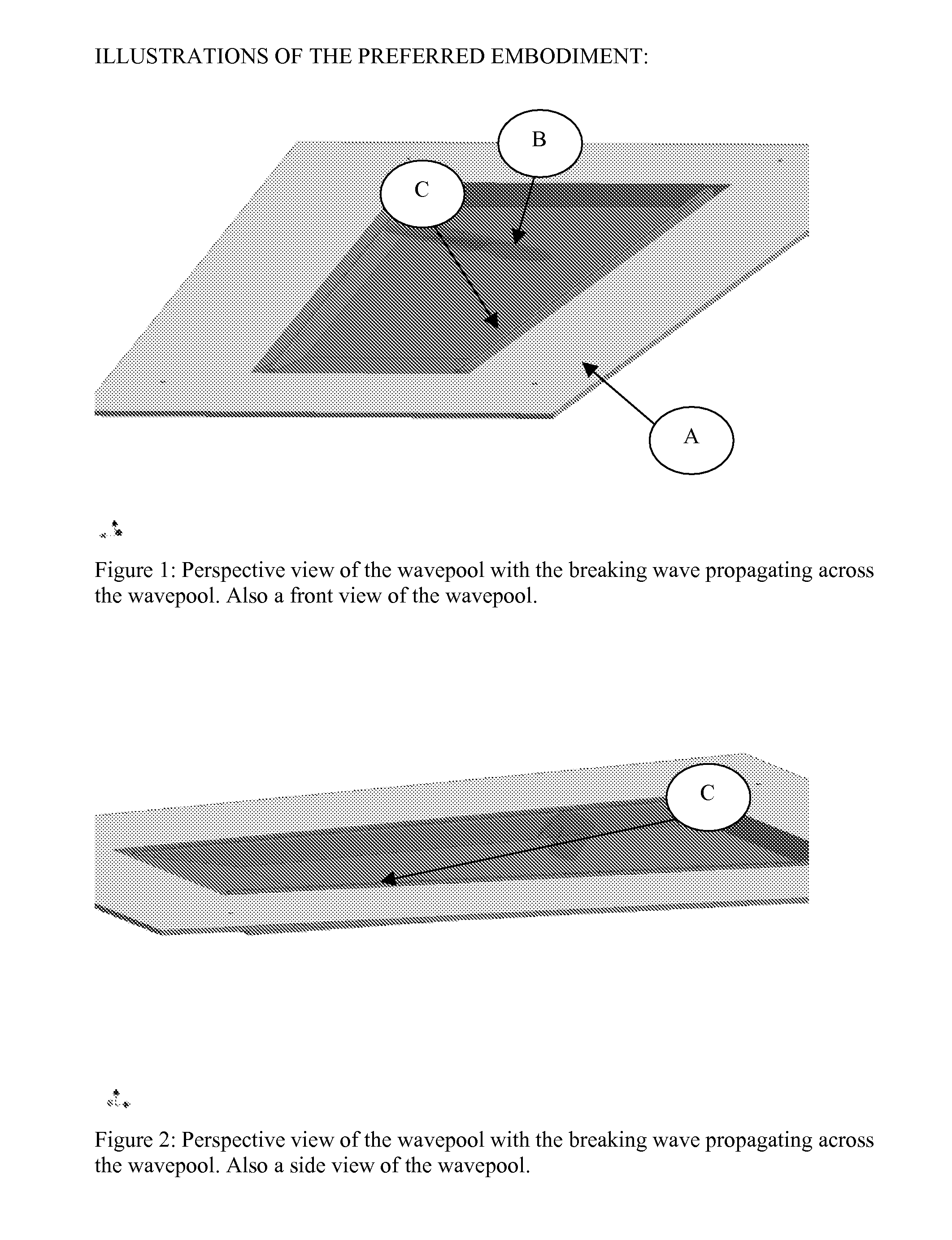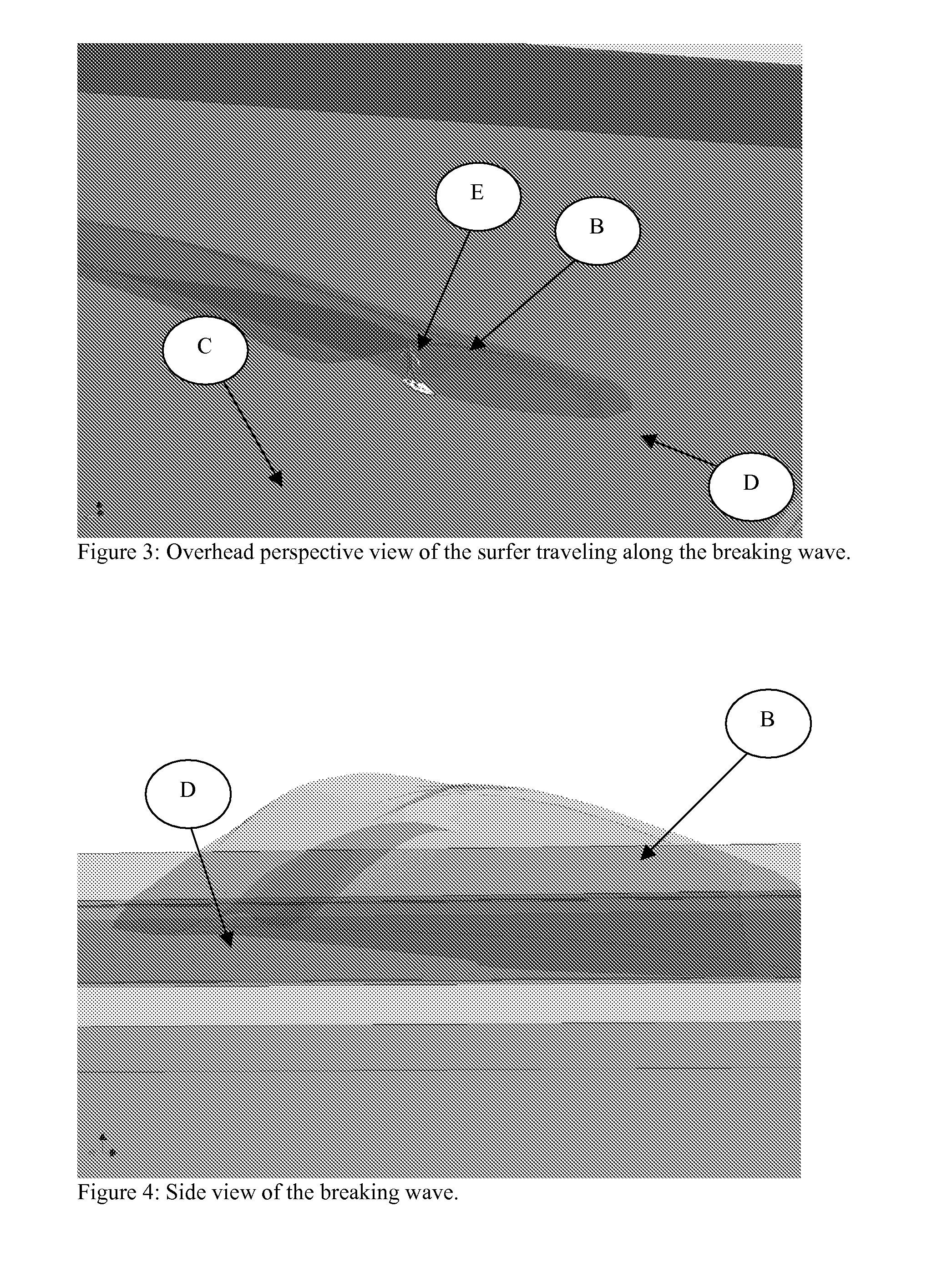A Traveling Camera Apparatus for Surfing
a technology for traveling cameras and surfers, applied in the direction of camera body details, instruments, stands/trestles, etc., can solve the problems of cameraman success, large amount of permits, and cost and time-consuming drawbacks, and achieve the effect of reducing drag and consuming more energy
- Summary
- Abstract
- Description
- Claims
- Application Information
AI Technical Summary
Benefits of technology
Problems solved by technology
Method used
Image
Examples
Embodiment Construction
[0059]All figures show the surfer and the breaking wave traveling in the same direction, regardless of the orientation of the figure. Every object in every figure also remains static for the remainder of the report. Motion and paths of motion are mentioned and described in the patent but no sequential figures or “before and after” figures are given that show displacement of an object described to be in motion. Only the view or the orientation of the viewer changes with respect to the subject.
[0060]This presentation of the material is straight forward and in simplistic terms. By not changing the positions of the subject, breaking wave, camera, camera housing, suspension system, or mounting system, the presentation of the material becomes simpler.
[0061]FIGS. 1 to 26 are snapshots taken from a 3D rendering of apparatus. These figures are used to describe the embodiment of the invention and give the reader a detailed description of the inventions components and functionality.
[0062]FIG. ...
PUM
 Login to View More
Login to View More Abstract
Description
Claims
Application Information
 Login to View More
Login to View More - R&D
- Intellectual Property
- Life Sciences
- Materials
- Tech Scout
- Unparalleled Data Quality
- Higher Quality Content
- 60% Fewer Hallucinations
Browse by: Latest US Patents, China's latest patents, Technical Efficacy Thesaurus, Application Domain, Technology Topic, Popular Technical Reports.
© 2025 PatSnap. All rights reserved.Legal|Privacy policy|Modern Slavery Act Transparency Statement|Sitemap|About US| Contact US: help@patsnap.com



